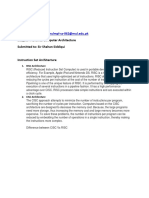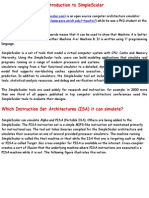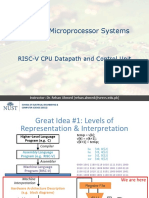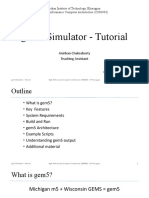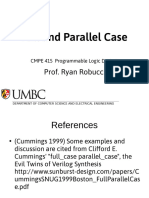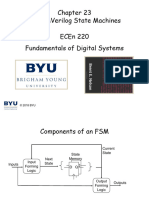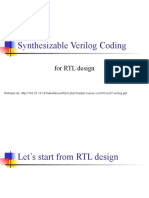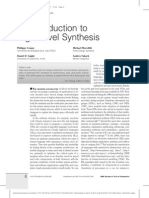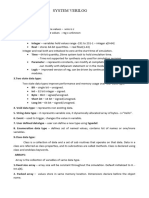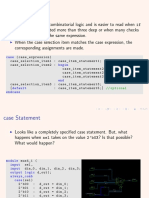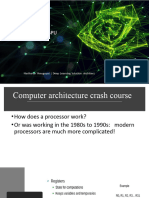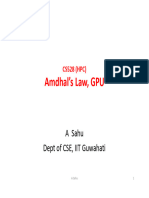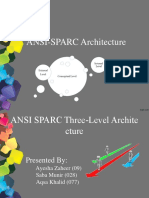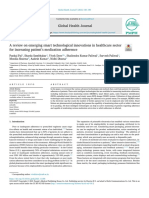CSCI-GA.
3033-012
Graphics Processing Units (GPUs):
Architecture and Programming
Lecture 1: Introduction
Mohamed Zahran (aka Z)
mzahran@cs.nyu.edu
http://www.mzahran.com
�Who Am I?
Mohamed Zahran (aka Z)
Computer architecture/OS/Compilers
Interaction
http://www.mzahran.com
Office hours: Wed 5:00-7:00 pm
Room: WWH 328
Course web page:
http://cs.nyu.edu/courses/spring12/CSCI-GA.3033-012/index.html
�Formal Goals of This Course
Why GPUs
GPU Architecture
GPU-CPU Interaction
GPU programming model
Solving real-life problems using GPUs
�Informal Goals of This Course
To get more than an A
To learn GPUs and enjoy it
To use what you have learned in MANY
different contexts
To have a feeling about how hardware
and software evolve
�The Course Web Page
Lecture slides
Info about mailing list, labs, .
Useful links (manuals, tools, book
errata, )
�The Textbook
Programming Massively Parallel
Processors: A Hands-on Approach
By
David B. Kirk & Wen-mei W. Hwu
�Grading
Homework assignments
Project
Programming assignments
Final
: 10%
: 20%
: 30%
: 40%
�Computer History
Eckert and Mauchly
1st working electronic
computer (1946)
18,000 Vacuum tubes
1,800 instructions/sec
3,000 ft3
�Computer History
Maurice Wilkes
EDSAC 1 (1949)
http://www.cl.cam.ac.uk/UoCCL/misc/EDSAC99/
1st stored program
computer
650 instructions/sec
1,400 ft3
�Intel 4004 Die Photo
Introduced in 1970
First
microprocessor
2,250 transistors
12 mm2
108 KHz
�Intel 8086 Die Scan
29,000 transistors
33 mm2
5 MHz
Introduced in 1979
Basic architecture
of the IA32 PC
�Intel 80486 Die Scan
1,200,000
transistors
81 mm2
25 MHz
Introduced in 1989
1st pipelined
implementation of
IA32
�Pentium Die Photo
3,100,000
transistors
296 mm2
60 MHz
Introduced in 1993
1st superscalar
implementation of
IA32
�Pentium III
9,500,000
transistors
125 mm2
450 MHz
Introduced in 1999
http://www.intel.com/intel/museum/25anniv/hof/hof_main.htm
�Pentium 4
55,000,000
transistors
146 mm2
3 GHz
Introduced in 2000
http://www.chip-architect.com
�Core 2 Duo (Merom)
Pentium 4
IBM Power 7
Montecito
Intel Core i7 (Nehalem)
Cell Processor
Niagara
(SUN UltraSparc T2)
�The Famous Moores Law
�Hardware Improvement
People ask for more
improvements
Positive Cycle
of Computer
Industry
People get used to the
software
Better Software
�The Status-Quo
We moved from single core to multicore
for technological reasons
Free lunch is over for software folks
The software will not become faster with every
new generation of processors
Not enough experience in parallel programming
Parallel programs of old days were restricted to
some elite applications -> very few programmers
Now we need parallel programs for many different
applications
�Two Main Goals
Maintain execution speed of old
sequential programs
Increase throughput of parallel
programs
�Two Main Goals
Maintain execution speed of old
sequential programs
CPU
Increase throughput of parallel
programs
GPU
�Many-core GPU
Multi-core CPU
Courtesy: John Owens
Figure 1.1. Enlarging Performance Gap between GPUs and CPU
�ALU
ALU
ALU
ALU
Control
CPU
GPU
Cache
DRAM
DRAM
�CPU is optimized for sequential
code performance
ALU
ALU
ALU
ALU
Control
CPU
GPU
Cache
DRAM
DRAM
�ALU
ALU
ALU
ALU
Control
CPU
GPU
Cache
DRAM
DRAM
Almost 10x the bandwidth of multicore
(relaxed memory model)
�How to Choose A Processor for
Your Application?
Performance
Very large installation base
Practical form-factor and easy
accessibility
Support for IEEE floating point
standard
�A Glimpse at A Modern GPU:
GeForce 8800 (2007)
16 highly threaded SMs, >128 FPUs,
367 GFLOPS, 768 MB DRAM,
86.4 GB/S Mem BW,
4GB/S BW to CPU
Host
Input Assembler
Thread Execution Manager
Parallel Data
Cache
Parallel Data
Cache
Parallel Data
Cache
Parallel Data
Cache
Parallel Data
Cache
Parallel Data
Cache
Parallel Data
Cache
Parallel Data
Cache
Texture
Texture
Texture
Texture
Texture
Texture
Texture
Texture
Texture
Load/store
Load/store
Load/store
Load/store
Global Memory
Load/store
Load/store
�A Glimpse at A Modern GPU
Streaming Multiprocessor (SM)
Host
Input Assembler
Thread Execution Manager
Parallel Data
Cache
Parallel Data
Cache
Parallel Data
Cache
Parallel Data
Cache
Parallel Data
Cache
Parallel Data
Cache
Parallel Data
Cache
Parallel Data
Cache
Texture
Texture
Texture
Texture
Texture
Texture
Texture
Texture
Texture
Load/store
Load/store
Load/store
Load/store
Global Memory
Load/store
Load/store
�A Glimpse at A Modern GPU
Streaming
Processor (SP)
SPs within SM share control logic
and instruction cache
Host
Input Assembler
Thread Execution Manager
Parallel Data
Cache
Parallel Data
Cache
Parallel Data
Cache
Parallel Data
Cache
Parallel Data
Cache
Parallel Data
Cache
Parallel Data
Cache
Parallel Data
Cache
Texture
Texture
Texture
Texture
Texture
Texture
Texture
Texture
Texture
Load/store
Load/store
Load/store
Load/store
Global Memory
Load/store
Load/store
�A Glimpse at A Modern GPU
Much higher bandwidth than typical system memory
A bit slower than typical system memory
Communication between GPU memory
and system memory is slow
Host
Input Assembler
Thread Execution Manager
Parallel Data
Cache
Parallel Data
Cache
Parallel Data
Cache
Parallel Data
Cache
Parallel Data
Cache
Parallel Data
Cache
Parallel Data
Cache
Parallel Data
Cache
Texture
Texture
Texture
Texture
Texture
Texture
Texture
Texture
Texture
Load/store
Load/store
Load/store
Load/store
Global Memory
Load/store
Load/store
�Amdahl's Law
Execution Time After Improvement =
Execution Time Unaffected +( Execution Time Affected / Amount of Improvement )
Example:
"Suppose a program runs in 100 seconds on a machine, with
multiply responsible for 80 seconds of this time. How much do we have to
improve the speed of multiplication if we want the program to run 4 times
faster?"
How about making it 5 times faster?
Improvement in your application speed depends on the portion that is parallelized
�Two Main Things to Keep in Mind
Try to increase the portion of your
program that can be parallelized
Figure out how to get around limited
bandwidth of system memory
�Enough for Today
We are done with Chapter 1
Some applications are better run on CPU
while others on GPU
The two main limitations
The parallelizable portion of the code
The communication overhead between CPU
and GPU
